A Theory of #China
EDITORIAL, 2 February 2015
by Johan Galtung, 2 Feb 2015 – TRANSCEND Media Service
Penang Institute, Penang
A theory serves comprehension, prediction and identification of conditions for change. Seven such historical-cultural pointers will be indicated for China; using the West in general, and the USA in particular, for comparisons. The presentation draws on countless dialogues in China over 40 years, since 1973.
* 1 China: in time, as dynasties; West: in space as empires.
Look at a histo-map combining world history and geography, time and space: China shows up through 4,000 years as relatively coherent dynasties with complex transitions–and the West as empires–birth-growth-peaking-decline-fall, like the Roman, UK and now US empires–duration vs bubbles that burst; as China-centric vs hegemonical.
* 2 Chinese space: Barbarian; US time: to create, past irrelevant.
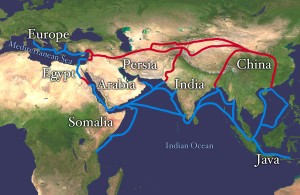 China marginalized “space” and people by defining them as “South-West-North-East barbarians” located outside the “Chinese pocket”, a geographical pocket itself situated between the Himalayas, the Gobi desert, the Tundra and the Sea. Except for the Silk roads (more by sea than by land) and the Silk lane connecting East China and East Africa which was destroyed by Portugal and England from 1500 in the process of colonizing Macao and Hong Kong. A goal of Chinese foreign policy today is to restore the Silk roads, lanes and sea-ways: high speed trains for Eurasia, cooperating for mutual and equal benefit with harmony on top of the Agenda. USA marginalizes “time” by disregarding the past history of people, and with the idea that the USA creates futures & New Beginnings for immigrants, and New History for itself, for other countries, for the whole world.
China marginalized “space” and people by defining them as “South-West-North-East barbarians” located outside the “Chinese pocket”, a geographical pocket itself situated between the Himalayas, the Gobi desert, the Tundra and the Sea. Except for the Silk roads (more by sea than by land) and the Silk lane connecting East China and East Africa which was destroyed by Portugal and England from 1500 in the process of colonizing Macao and Hong Kong. A goal of Chinese foreign policy today is to restore the Silk roads, lanes and sea-ways: high speed trains for Eurasia, cooperating for mutual and equal benefit with harmony on top of the Agenda. USA marginalizes “time” by disregarding the past history of people, and with the idea that the USA creates futures & New Beginnings for immigrants, and New History for itself, for other countries, for the whole world.
*3 Chinese thought: cyclical-repetitive; West: linear-cumulative.
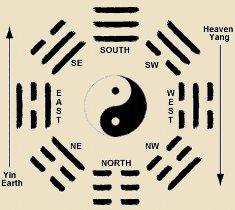 To Daoism valid knowledge is holistic and dialectic, based on big, complex units of thought (whole human species, China, the World) riveted by forces and counter-forces, yin/yang, good vs bad, themselves respectively yin/yang, with that which is suppressed growing nonetheless and with that which is dominant declining till the next turn. The holon may jump from one contradiction tapering off to the next. To the West, valid knowledge is based on subdivision and accumulation of knowledge about elements, woven together in theories – the cartesian heritage.
To Daoism valid knowledge is holistic and dialectic, based on big, complex units of thought (whole human species, China, the World) riveted by forces and counter-forces, yin/yang, good vs bad, themselves respectively yin/yang, with that which is suppressed growing nonetheless and with that which is dominant declining till the next turn. The holon may jump from one contradiction tapering off to the next. To the West, valid knowledge is based on subdivision and accumulation of knowledge about elements, woven together in theories – the cartesian heritage.
To Mao Zedong the basic contradiction was foreign imperialism with landowners vs. the people, students, peasants and workers. The 1949 revolution started a distribution vs. growth dialectic with jumps every nine years 1from 958 to1967, from 1967 to 1976: Mao’s death which triggered four chaotic years. To Deng Xiaopeng what mattered was the misery vs. lack of growth dialectic. The 1980 revolution accumulated capital with farmers near cities and in Shenzen (26% growth p.a.), and re-created merchants. Then nine years distribution vs growth again: from 1989 (Tiananmen!) distribution, 1998, 2007, 2016: new focus on growth.
*4 China three civilizations synergizing; West three civilizations fighting.
China draws on daoist insights, one Confucian ideas of hierarchies with harmony, and Buddhist small community equality: Buddhism for distribution, Confucianism for growth, Daoism for jumps between them. The West could have drawn upon the positives in Judaism, Christianity and Islam, but focused on negativs for discrimination-prejudice-war-genocide–now as Judeo-Christianity vs Islam–with unused synergies.
*5 China shi’h-nung-kung-shang; West clergy-aristocracy-merchants.
Chinese mandarin (shi’h) rulers combined rule by rules with high culture, over farmers and artisans, and merchants marginalized at the bottom; Western aristocrat rulers combined rule with force, trade and clergy benediction; later to become State, Capital, Intelligentsia. A basic difference was marginalization vs. integration of merchants.
*6 China: Son of the Heaven/tribute; West: rex gratia dei/war.
The Chinese Emperors were Sons of the Heaven trading with those who paid tribute to the Emperor; in the Western Heaven was the only God for the whole world at all time, creating and taking life, the monarch being the only person with a Mandate from God–rex gratia dei–by the grace of God, also entitled to take life, delegated to His army. The English refused to pay tribute, using opium wars, “gunboat diplomacy”, burning (with the French) the imperial palace instead; China was never violent outside the “pocket” (except when provoked by India in 1962).
*7 China: Mandate of the People; West multi-party national FAFE.
The Mandate of the Heaven is lost when People shout in the streets, and regained by addressing their grievances and ideas in the ancient petition system. By “idea democracy, not arithmetic democracy”; the West counting votes in multi-party national fair and free elections.
The Cultural Revolution shouted in the streets against Confucian rule by older men with high education from East China, paving the way for the young, the women and West China–also in 80 million educated “communist” Party members, presumably wise enough to understand the yin/yang dialectics. Tiananmen 1989 was not about democracy, “no votes for uneducated”, but–like Hong Kong?–about losing their feudal position to wealthy farm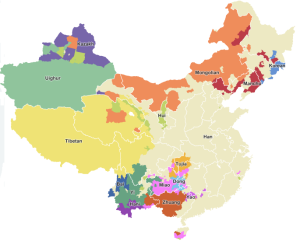 ers, merchants, private and state capitalists.
ers, merchants, private and state capitalists.
Summary, conclusion, prognosis.
China is China-centric, the deep culture is still holistic-dialectic with a Western surface, the three civilizations synergy is there. So is the Chinese inability to handle the “pocket”: Taiwan-Tibet-Uighurs-Mongolians–Vietnamese-Koreans.
But China indeed went global; trading with barbarians; upgrading merchants-traders-money people; accumulating huge wealth. Mao opened society for huge masses of Chinese, the young, women, and the West; Deng lifted the bottom 3-400 million up 1991-2004, with the communist focus on the needs of the neediest, into capitalism: capi-communism. Beijing 1980: six million bicycles 0 private cars; 2010: 0 vs five million. The West, out-competed by BRICS, did more killing than learning.
China’s ruling class, steeped in culture, linked dynastic cycles to yin-yang thought, and traders to barbarians. Today’s rulers, deep in money shouting to beget more money, link money to corruption–and speculation? And competition from Latin America+Africa–shouting in the streets may send China packing–and the end of a dynasty is near.
China’s lead is not forever. Nothing ever was. Except, maybe, some China. A more spiritual dynasty, after materialist “communism”?
________________________________
Johan Galtung, a professor of peace studies, dr. hc mult., is rector of the TRANSCEND Peace University-TPU. He is author of over 150 books on peace and related issues, including ‘50 Years-100 Peace and Conflict Perspectives,’ published by the TRANSCEND University Press-TUP.

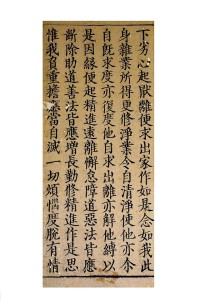
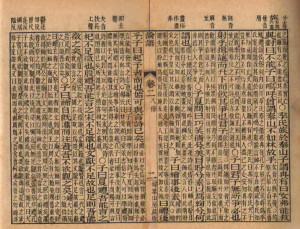
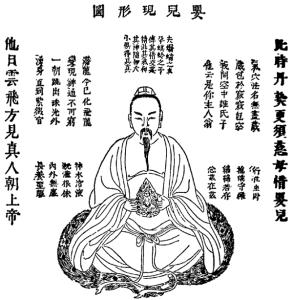
![[X]](/img/dialog-close.png)